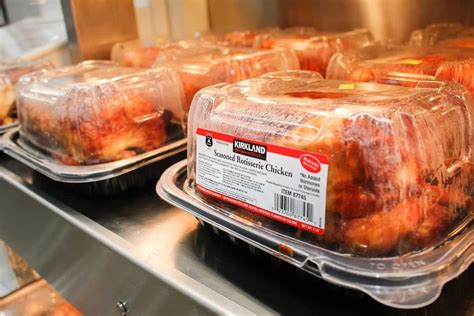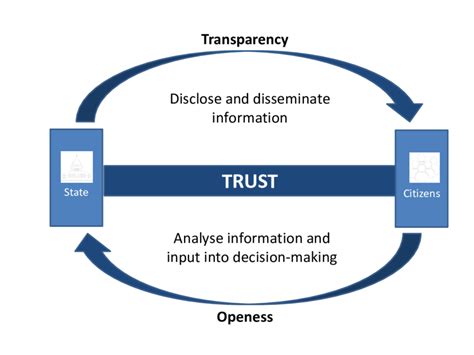
Costco’s popular rotisserie chicken, while a convenient and affordable meal option, contains a high sodium level that consumers should be aware of. Nutrition experts and health-conscious shoppers are raising concerns about the potential health implications of regularly consuming these chickens due to their sodium content.
The appeal of Costco’s rotisserie chicken is undeniable: a fully cooked, readily available meal for just $4.99. This price point, maintained for years, has made it a staple for many families looking for a budget-friendly dinner solution. However, the convenience and cost savings come with a hidden ingredient of concern: sodium. According to a recent report, the sodium levels in Costco’s rotisserie chickens can be significantly higher than recommended daily allowances, raising questions about its long-term health effects, particularly for individuals with hypertension or other sodium-sensitive conditions. The high sodium content is largely due to the brining process used to keep the chicken moist and flavorful.
The Sodium Content: A Closer Look
While Costco does not publicly disclose the exact sodium content of its rotisserie chickens, nutritional analyses have provided estimations that raise eyebrows. Registered dietitians and nutritionists suggest that a single serving of Costco’s rotisserie chicken can contain a substantial portion of the recommended daily sodium intake. This is primarily attributed to the pre-preparation brining process. Brining involves soaking the chicken in a salt-water solution to enhance its moisture and flavor. Although this technique effectively prevents the chicken from drying out during the rotisserie cooking process, it also leads to a significant absorption of sodium.
According to various sources and estimations, a typical serving (approximately 3-4 ounces) of Costco’s rotisserie chicken may contain anywhere from 400 to 700 milligrams of sodium. Considering that the American Heart Association recommends no more than 2,300 milligrams of sodium per day for most adults, and ideally limiting intake to 1,500 milligrams per day for optimal heart health, a single serving of Costco chicken could contribute a significant portion of this allowance. For individuals consuming multiple servings or incorporating the chicken into several meals throughout the day, the sodium intake could easily exceed these recommended limits.
Why is Sodium a Concern?
Excessive sodium intake is a well-established risk factor for several health problems, most notably high blood pressure (hypertension). Hypertension, often referred to as the “silent killer,” can lead to a range of cardiovascular complications, including heart disease, stroke, kidney damage, and even heart failure. High sodium levels cause the body to retain water, increasing blood volume and, consequently, blood pressure. Over time, this elevated pressure can strain the heart and blood vessels, increasing the risk of serious health issues.
Furthermore, excessive sodium consumption can also have adverse effects on kidney function. The kidneys play a crucial role in regulating sodium levels in the body, and when overloaded with sodium, they may become overworked and damaged over time. This can lead to chronic kidney disease and other related complications. Additionally, some studies suggest that high sodium intake may contribute to other health problems, such as osteoporosis (weakening of the bones) and certain types of cancer.
Expert Opinions and Recommendations
Registered dietitians and nutrition experts are increasingly advising consumers to be mindful of the sodium content in processed and prepared foods, including rotisserie chickens. They emphasize the importance of reading nutrition labels carefully and making informed choices about dietary intake. For individuals who regularly consume Costco’s rotisserie chicken, experts recommend several strategies to mitigate the potential health risks associated with high sodium intake.
One key recommendation is to practice portion control. Limiting the serving size of rotisserie chicken can help reduce the overall sodium intake from this particular food source. Another suggestion is to balance the meal with low-sodium side dishes, such as steamed vegetables, fresh salads without salty dressings, or whole grains cooked without added salt. This can help offset the sodium content of the chicken and create a more balanced and heart-healthy meal.
Furthermore, some experts advise removing the skin from the rotisserie chicken before consuming it, as the skin often contains a higher concentration of sodium and fat. While this may slightly reduce the flavor of the chicken, it can also significantly reduce the overall sodium and fat content, making it a healthier option. Additionally, individuals can consider preparing their own rotisserie chicken at home, where they have greater control over the ingredients and can reduce the amount of salt used in the brining process or eliminate it altogether.
Costco’s Response and Consumer Awareness
While Costco has not explicitly addressed the concerns regarding the sodium content of its rotisserie chickens, the company has generally emphasized its commitment to providing high-quality products at affordable prices. Costco’s business model relies on high-volume sales and efficient operations, which allows them to maintain low prices on many of their popular items, including the rotisserie chicken. The company may argue that the brining process is essential to maintaining the chicken’s flavor and preventing it from drying out during cooking, which are key factors in its popularity and affordability.
However, in light of the growing awareness of the health risks associated with excessive sodium intake, it is important for Costco to consider ways to reduce the sodium content of its rotisserie chickens without compromising their quality or affordability. This could involve exploring alternative brining techniques, using lower-sodium brines, or providing consumers with more detailed information about the sodium content of the chicken so they can make informed choices.
Ultimately, consumer awareness is crucial in addressing the potential health risks associated with high sodium intake. By understanding the sodium content of common foods like Costco’s rotisserie chicken, individuals can make more informed dietary choices and take steps to reduce their overall sodium intake. Reading nutrition labels, practicing portion control, and balancing meals with low-sodium options are all effective strategies for managing sodium intake and promoting better health.
Alternative Options and Home Preparation
For those concerned about the sodium levels in store-bought rotisserie chickens, preparing your own at home offers a healthier alternative. By roasting a chicken yourself, you have complete control over the ingredients and can significantly reduce or eliminate added sodium. You can use herbs, spices, and citrus to enhance the flavor without relying on salt. Numerous recipes and online tutorials provide guidance on roasting a chicken perfectly, ensuring a moist and flavorful result without the added sodium burden.
Additionally, exploring other protein sources and meal options can help diversify your diet and reduce reliance on rotisserie chicken as a primary source of protein. Grilled fish, lean meats, beans, and lentils are all excellent alternatives that can provide essential nutrients without the excessive sodium content. Incorporating a variety of these options into your weekly meal plan can contribute to a more balanced and heart-healthy diet.
The Broader Context: Sodium in Processed Foods
The concerns surrounding the sodium content of Costco’s rotisserie chicken highlight a broader issue: the prevalence of high sodium levels in many processed and prepared foods. Sodium is often added to processed foods as a preservative, flavor enhancer, and texture modifier. As a result, many common food items, such as canned soups, frozen meals, deli meats, and snack foods, can contain surprisingly high levels of sodium.
According to the Centers for Disease Control and Prevention (CDC), the majority of sodium consumed by Americans comes from processed and restaurant foods, rather than from salt added at the table. This underscores the importance of reading nutrition labels carefully and making informed choices about the foods we consume. The CDC recommends several strategies for reducing sodium intake, including:
- Choosing fresh, whole foods over processed foods whenever possible.
- Reading nutrition labels carefully to compare sodium content in different products.
- Cooking at home more often, using fresh ingredients and controlling the amount of salt added.
- Using herbs, spices, and other flavorings instead of salt to season foods.
- Rinsing canned foods, such as beans and vegetables, to remove excess sodium.
- Asking restaurants to prepare your food with less salt.
By adopting these strategies, individuals can significantly reduce their overall sodium intake and lower their risk of developing hypertension and other sodium-related health problems.
The Economic Factor: Balancing Cost and Health
The affordability of Costco’s rotisserie chicken is a significant factor in its popularity, particularly for budget-conscious families. However, it is important to consider the long-term health costs associated with consuming high-sodium foods. While the initial cost savings may be appealing, the potential health consequences of excessive sodium intake, such as hypertension and related complications, can lead to significant healthcare expenses down the road.
Therefore, it is essential to strike a balance between cost and health when making dietary choices. While Costco’s rotisserie chicken can be a convenient and affordable meal option, it should be consumed in moderation as part of a balanced diet that includes a variety of fresh, whole foods. By being mindful of portion sizes, balancing meals with low-sodium options, and preparing more meals at home, individuals can enjoy the convenience and affordability of Costco’s rotisserie chicken without compromising their health.
Future Considerations and Industry Trends
As consumer awareness of the health risks associated with excessive sodium intake continues to grow, there is increasing pressure on food manufacturers and retailers to reduce the sodium content of their products. Some companies are already taking steps to address this issue by developing lower-sodium versions of popular foods, using alternative preservation techniques, and providing consumers with more detailed information about sodium content.
In the future, we may see further advancements in food technology that allow for the reduction of sodium without compromising taste or quality. For example, researchers are exploring the use of salt substitutes, such as potassium chloride, and novel processing techniques that can enhance flavor perception without the need for excessive sodium. Additionally, public health initiatives aimed at educating consumers about the health risks of excessive sodium intake and promoting healthier dietary choices are likely to play an increasingly important role in reducing sodium consumption at the population level.
The takeaway is this: While Costco’s rotisserie chicken remains a popular and affordable option, consumers need to be aware of its high sodium content. By practicing moderation, balancing meals with low-sodium options, and exploring alternative cooking methods, individuals can continue to enjoy this convenient meal without compromising their health. The key lies in informed decision-making and a commitment to a balanced and heart-healthy diet.
Frequently Asked Questions (FAQ)
1. How much sodium is in a Costco rotisserie chicken?
While Costco does not officially disclose the sodium content, estimations suggest a typical serving (3-4 ounces) contains approximately 400 to 700 milligrams of sodium. This can vary, and it’s important to consider that the entire chicken contains significantly more. The high sodium is due to the brining process used to keep the chicken moist.
2. Why is high sodium a health concern?
Excessive sodium intake is linked to high blood pressure (hypertension), increasing the risk of heart disease, stroke, kidney damage, and other cardiovascular problems. It can also negatively impact kidney function and may contribute to osteoporosis and certain cancers.
3. How can I reduce my sodium intake when eating Costco rotisserie chicken?
- Portion Control: Limit your serving size.
- Balanced Meals: Pair the chicken with low-sodium sides like steamed vegetables or a salad with low-sodium dressing.
- Remove the Skin: The skin contains a higher concentration of sodium and fat.
- Home Cooking: Prepare your own rotisserie chicken at home to control the sodium content.
4. Are there healthier alternatives to Costco rotisserie chicken?
Yes, consider grilling fish, lean meats, or incorporating beans and lentils into your diet for alternative protein sources. Preparing your own roasted chicken at home with herbs and spices instead of excessive salt is also a healthier option.
5. Is Costco likely to change the sodium content of their rotisserie chickens?
Costco hasn’t explicitly addressed changing the sodium content. However, increasing consumer awareness and pressure on food manufacturers to reduce sodium may prompt them to explore alternative brining techniques or provide more detailed sodium information to allow consumers to make informed choices. It’s up to consumers to make informed choices in the meantime.









